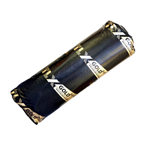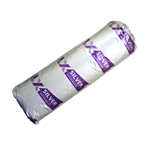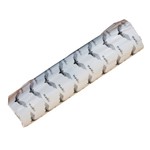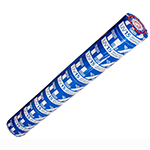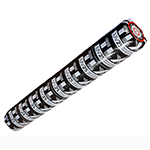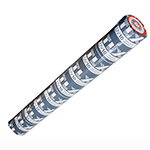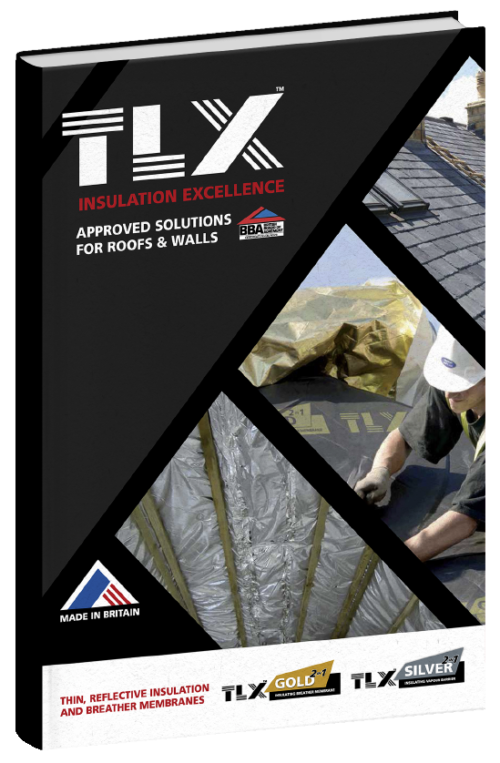What is Multifoil Insulation?
6 Minute read
-
An overview of how Multifoil Insulation works
-
Where Multifoil insulation can be used, and the methods of fitting
Multifoil insulation (also known as foil insulation) is a widely used term, but what does it actually mean? Multifoil insulation is thin reflective layers 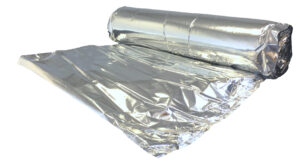 of insulation. These layers comprise of reflective films interspersed with insulating sections, generally made from wadding. These wadding and reflective layers interact with each other to maximise the thermal efficiency of the structure in which they are applied. But how do they do this?
of insulation. These layers comprise of reflective films interspersed with insulating sections, generally made from wadding. These wadding and reflective layers interact with each other to maximise the thermal efficiency of the structure in which they are applied. But how do they do this?
How does Multifoil Insulation work?
The beauty of multifoil insulation lies in its unique ability to control all three types of thermal heat transfer: conduction, convection and radiation. But how does it do this and how will this benefit the performance of the building in which it’s fitted? Here’s the science behind the ability:
The shiny, reflective layers of our multifoil insulation not only provide complete airtightness, but also help to prevent the risk of condensation. These surfaces are excellent at reflecting heat back into a dwelling, therefore keeping the house warm in winter. It can also prevent overheating by controlling the amount of solar radiation entering the building, making for a much more pleasant internal environment in summer. Its responsiveness to fluctuations in external conditions makes for very effective multifoil insulation. Interspersed with layers of wadding which trap air between the reflective surfaces, in turn prevents conduction.
What makes good multifoil insulation?
The key to good multifoil insulation is producing a product with minimal thickness and optimal performance, in our 15 years of R&D into multifoil insulation, TLX Insulation has found 30mm to be exactly that optimum. Go beyond 30mm and you gain limited additional performance. Go thinner than 30mm and you start to lose considerable performance benefits.
Another key consideration is design. TLX Silver Multifoil Insulation is ultrasonically welded, sounds impressive and that’s because it is! It gives TLX Silver a seamless vapour control layer, with a strong, clean and robust seal.
The other critical element to consider is Certification, below is a short overview of the key certificates which TLX Silver holds:
BBA:
British Board of Agrément (BBA) certifications are extremely important as they provide assurance that the product has been comprehensively tested to the highest standard. Industry professionals are safe in the knowledge that a BBA certified product, such as our TLX Silver and TLX Gold, will be reliable and effective.
LABC:
Local Authority Building Control (LABC) is an assessment process which provides a registered status for products. Since it is the only one of its kind that is supported by all local authorities, gaining LABC recognition gives the confidence that registered products are trusted and dependable. Both our multifoils, TLX Silver and TLX Gold are recognised by LABC and have LABC registered detail status.
UKCA:
UKCA marked products give peace of mind in the knowledge that they are manufactured in accordance with a European Technical Assessment (ETA) or a harmonised European norm. (hEN.) Both TLX multifoils have this mark.
Where can Multifoil Insulation be used?
Our 2-in-1 insulation, TLX Silver, minimises the risk of condensation whilst providing an invaluable space saving solution. Install it underneath the roof rafters or across the front face of timber studs within a wall. It provides both a vapour control layer and thermal resistance.
As for our 2-in-1 insulating breathable membrane, TLX Gold, it is installed over the top of the rafters, either draped or pulled taut and counter-battened. Since it has a shiny, breathable under surface which reflects heat back into the building, there is no need for an additional vapour barrier underneath the rafter.
Loft Conversions:
Fit TLX Silver multifoil insulation taut across the bottom of the rafter. Secure it in place with 38x38mm cross battens. Ensure there is an unventilated air layer between rigid insulation in-between the rafter and TLX Silver. If you use mineral wool, you don’t need an air gap. Installed in this way, TLX Silver multifoil insulation provides complete airtightness. It is a very effective vapour barrier, preventing the risk of condensation.
Extensions:
Similarly, when working on an extension, fit TLX Silver multifoil insulation taut across the bottom of the rafter, secured with 38x38mm battens.
Walls:
Install TLX Silver pulled taut across the front face of the stud, secured with 38x38mm battens in line with the studs. Secure additional insulation in-between the studs.
New Build:
Fit TLX Silver multifoil insulation underneath the rafter in a new build to retain heat inside in winter and limit the amount of solar heat gain in summer. Its highly reflective surfaces limit radiation. Utilising unventilated air gaps on either side of it also minimises conduction and convection.
Flat roof:
Ensure a 50mm ventilated air space below the deck. Fit PIR insulation in-between the rafters, then install TLX Silver pulled taut and counter-battened across the bottom of the rafter. Then fit a cross batten before the addition of the standard 12.5mm plasterboard.
Floor:
Since air gaps are an essential part of a build-up, use foil insulation in timber suspended floors. Here, it is possible to maintain the required air gap for the optimal thermal performance of the structure. It is beneficial if a basement or a cellar is present underneath, to gain ease of access from below for installation.
DIY projects:
You can use TLX Silver in a variety of DIY projects such as garages, sheds and caravans. Used on the inside of the structure, it provides an effective vapour barrier to limit the possibility of condensation. Its reflective layers also help to retain heat in winter and minimise solar heat gain in summer.
Multifoil insulation problems?
As with most insulation products, the problems tend to come from incorrect installation procedures. Below are the main things to look out for when installing Multifoil Insulation:
- Airtightness is very important. It is crucial to ensure the structure is airtight to prevent the risk of condensation. To do this, seal the sections together with tape such as Unibond power tape
- Overlap TLX Silver by at least 50mm to provide complete airtightness. You will therefore limiting the risk of condensation
- The batten size should be sufficient to ensure a minimum 20mm airgap between TLX Silver and the plasterboard, allowing a cavity for services. Although it is important not to use a very large batten as this could cause a substantial thermal bridge. 38x38mm battens are suitable for securing TLX Silver
- Repair any tear holes with adhesive tape such as Unibond power tape
- Minimising thermal bridging is a priority when it comes to maximising the thermal efficiency of the multifoil and decreasing heat loss. Fix battens crosswise to limit the surface area of the bridge, ensuring a greater thermal performance
- If the roof consists of a non-breathable membrane, for instance in a flat roof, a 50mm ventilated air gap below the timber deck. This is to allow water vapour to escape the rafter space via the eaves and prevent the risk of condensation. Use TLX Silver in conjunction with PIR board in between the rafters, maintaining a 20mm unventilated air gap between
Hybrid systems
When used as part of a hybrid system, TLX Silver can significantly reduce the depth of additional insulation required. It does this by utilising the air gaps on either side of it, created by the 38x38mm counter battens used to secure it in place. The reflective outer layers of TLX Silver enhance the R value of the static air adjacent to it and make for a more uniform structure, where each of the individual layers work together to control the transfer of heat and water vapour.
FAQ:
Multifoil insulation vs PIR?
Multifoil insulation offers many favourable benefits over the use of PIR alone. PIR board is difficult to install, creating a lot of waste. If used alone, it would prove extremely difficult to achieve airtightness. Additionally, you need a greater thickness to meet current building regulations. Therefore, you will lose head height in the attempt to achieve a greater thermal performance. However, if used in conjunction with a multifoil such as TLX Silver, this reduces the amount of PIR needed in-between the rafter. TLX Silver also provides an airtight vapour barrier allowing for a greater thermal performance and preventing the risk of condensation.
Multifoil insulation u value?
A U value is a measure of heat loss through a structure; therefore, you cannot attribute a u value to a single product, it simply doesn’t have one. However, when used in conjunction with other types of insulation in a hybrid system, TLX multifoils can achieve u values as low as 0.13w/m2k in a standard roof. Our LABC approved solutions guide details various build-ups to help you achieve the desired u value. If you require a bespoke calculation, our knowledgeable team of product scientists are on hand to help.
Multifoil insulation installation?
Multifoil Insulation Cutter?
We recommend the use of Kretzer Finny scissors for TLX Silver due to their high performance and sturdy construction which cuts through multifoils with ease and accuracy.
If you need advice on your next project, please get in touch. We are on hand to help with any technical enquiry you may have throughout all stages of a build. So, whether you are planning your next project or require on-site installation advice, we would love to hear from you.
Sample Pack Request
Error: Contact form not found.

